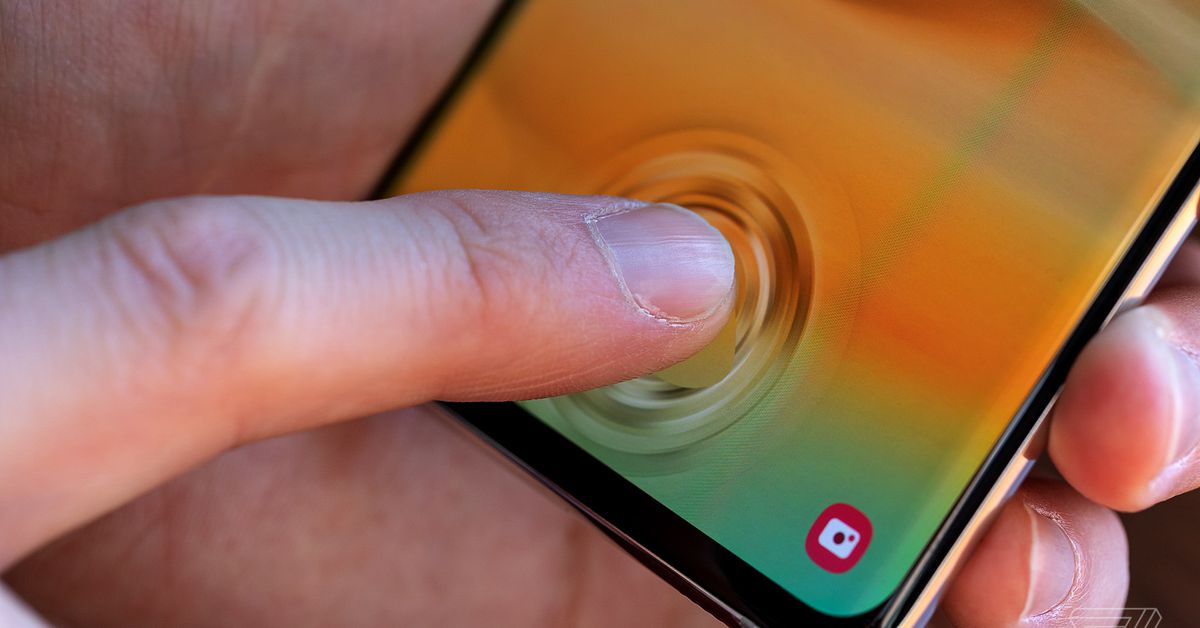Qualcomm’s second-gen ultrasonic fingerprint reader is bigger and faster than the original
Source: The Verge added 11th Jan 2021Qualcomm has just announced the 3D Sonic Sensor Gen 2, the latest version of its ultrasonic in-display fingerprint sensor that looks to improve on the original model in nearly every way. The new version offers a larger surface area for the sensor and faster processing to unlock phones even quicker.
The company is making a big jump here: the new Gen 2 model measures 8mm x 8mm, compared to the 4mm x 9mm surface area of the first-generation model, for 77 percent more surface area. In turn, that means it’ll be easier to accurately place your finger on the sensor, and it allows for the sensor to collect more data with each scan. By combining the larger sensor with faster processing, Qualcomm promises that scanning a fingerprint to unlock a phone will go 50 percent faster with the 3D Sonic Sensor Gen 2.
Qualcomm’s first-generation ultrasonic sensor — the 3D Sonic Sensor — made its debut in the Galaxy S10 lineup of phones in 2018. At the time, nearly every other in-display reader used an optical scanner, which was said to be slower and less reliable than the new ultrasonic one.
But the reality turned out to be the opposite: the first-generation 3D Sonic Sensor ran into numerous issues, including a highly problematic security flaw that caused the readers to unlock phones with almost any fingerprint when used with some screen protectors. (Samsung would later fix the problem with a software update.) And the company recently issued another patch for the Galaxy Note 20 lineup, addressing similar screen protector problems.
The new sensor is technically the third under-display ultrasonic fingerprint reader from Qualcomm, following the original 3D Sonic Sensor and the 3D Sonic Max (introduced in 2019) — which was effectively just a much larger version of the first-gen sensor, but it lacked any real speed improvements. While the 3D Sonic Sensor Gen 2 doesn’t quite match the 3D Sonic Max’s sensor (which measured a whopping 20mm x 30mm) in size, the speed improvements should more than make up for it.
Qualcomm says that the first phones to feature that new 3D Sonic Sensor Gen 2 should be available in “early 2021.” The company doesn’t mention any partners or more specific timing in its announcement, but it’s worth noting that Samsung is expected to announce its latest Galaxy S21 devices on January 14th. Samsung is the biggest customer for Qualcomm’s ultrasonic fingerprint readers so far, having previously used them in its S10, Note 10, S20, and Note 20 lineups for the past two years.
brands: Galaxy Jump New other Qualcomm Reality Samsung media: 'The Verge' keywords: Galaxy Phone Qualcomm Samsung Sensor Software
Related posts
Notice: Undefined variable: all_related in /var/www/vhosts/rondea.com/httpdocs/wp-content/themes/rondea-2-0/single-article.php on line 88
Notice: Undefined variable: all_related in /var/www/vhosts/rondea.com/httpdocs/wp-content/themes/rondea-2-0/single-article.php on line 88
Related Products
Notice: Undefined variable: all_related in /var/www/vhosts/rondea.com/httpdocs/wp-content/themes/rondea-2-0/single-article.php on line 91
Warning: Invalid argument supplied for foreach() in /var/www/vhosts/rondea.com/httpdocs/wp-content/themes/rondea-2-0/single-article.php on line 91
